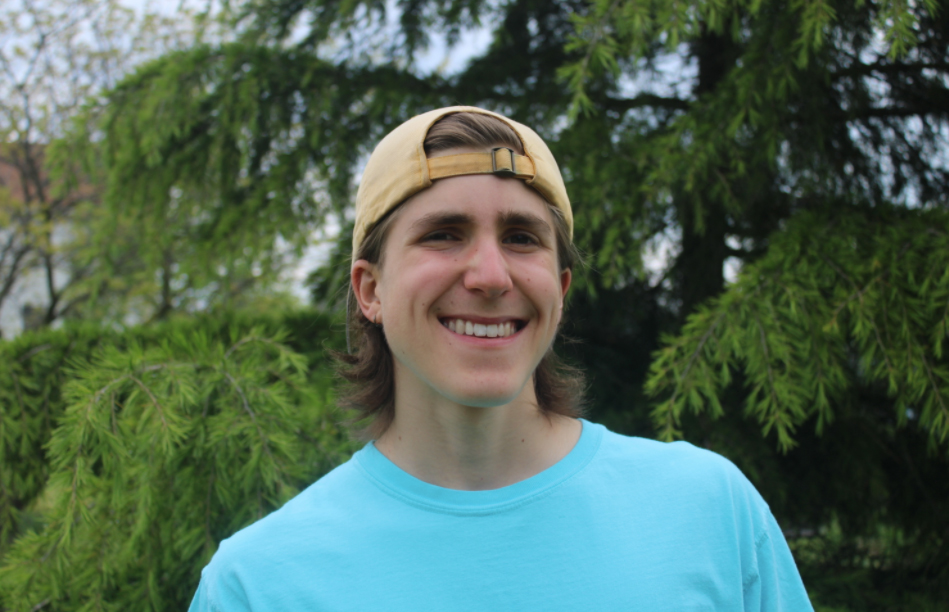When the world turned upside down, I turned to the woods.
With both feet on the ground, connected to the earth, planted among lifeforms, I find my way. At this moment, I am by myself, but not alone. Save for the organic ambiance of the day, there is a stillness that beckons internal healing and silences the dissonant life that lies outside the treeline. At this moment, I am recharging.
I’d say that I’m a naturalist at heart. My tolerance level for spiders and fungus and mud tends to be higher than most, and I can’t imagine a day without at least some time outside. If I had to pick a superpower, I’d choose the ability to photosynthesize. You could do a quick dive into my home computer’s hard drive and find countless (embarrassing) videos of young Gavin studying leaves like fine art or releasing monarch butterflies. “See you next week!” I yowled, the farewell drenched in hope and youth.
Fifteen years later, I still offer a moment of pause when I see one of these fluttering friends. Perhaps it is a deep attachment to that youthful promise. Perhaps it is the pressure of the world around me, urging me to practice more mindfulness during “these challenging times.” More honestly, though, it is because the world does feel upside-down. We long for normality: the metaphysical entity that actualizes only in its absence. Connecting to nature connects me with normality. After all, a virus might make our breath falter, but it can never halt earth’s breath. She inhales our piping tense aura, breathes out cool waves of calm. At this moment, I find peace.
Realigning our perspective might be the boldest challenge of our year so far. It feels good to plug into some of that hope and youth from a less challenging time, but it takes effort when our surroundings direct us elsewhere. The weight of the world stifles, truncates, relegates the mind’s influence. Our outlets seem far above our heads when tough times are afoot. Life becomes a game of learning to jump. Before learning this skill, I had to get my bearings this summer.
I have lived most of my twenty years on this planet in the County of Gloucester, New Jersey. While famous for early-spring asparagus, late-summer peppers, and year-round Wawa coffee, this area is in no deficit of poignant woodland pockets. Just minutes out of my backdoor lies the vast Oldman’s Creek Preserve, my prime destination for daily walks when the weather turns, the birds emerge, and the insects surge.
The Preserve is not merely a therapeutic escape, though. It also happened to be the site of a volunteer experience, to which I owe much gratitude. I got in touch with the South Jersey Land and Water Trust (SJLWT), the stewards of the Preserve, in search of a summer opportunity to fill my time. I couldn’t refuse an experience rooted in ecology. I met a breadth of kind people who shared with me their work, mission, and values. I hold them all dear to my heart. What’s more, my daily pilgrimage became just the right antidote to the quarantine blues.
Every day over the summer, I rode my bike to the preserve, walked the trails, and sharpened my knowledge of ecology. Occasionally, I would work with other volunteers on larger projects such as restoring a streambed, tending to rain gardens, and fending off an encroaching Spotted Lanternfly infestation. It lent me a sense of purpose: grounding, during a time when the whole world seemed to be treading on unstable ground. It also gave me time to think. Each day when I walked the trails, I could let my mind meander among the trees while the troubles of the world dissolved underneath the raw muse of nature. This daily reprieve was essential.
The beauty of our struggle lies in the fact that to grieve now is to, undoubtedly, grieve alongside countless others. I’ll admit that I had my moments. March, March part 2, and March part 3. They just weren’t fun. “Scary hours,” I like to call it. Directionless, we all trudged down bleak paths as the world somersaulted. Our summer plans were shattered. Hugs from distant loved ones seemed years away. We all went through it, so I need not dwell on that. What is worth the spotlight, though, are the ways we challenged our grief.
While human nature determines how we grieve, our human experience determines how we emerge from grief stronger and more resolute. When the pandemic made one summer job unfeasible, I looked towards something else. When the trees couldn’t grow any higher, they grew more leaves. Our monotone groans of the “scary hours” morphed into a colorful symphony of new relationships, new hobbies, new goals. The path that each of us took depended on the trace of our roots. By sharing our roots, we reveal deep stitches of our humanity that have the power to do the same. We’ll weave our stories into an earthen token of hope and carry it against the challenges of our days, our years, our lifetimes, chiming together in song to unite, heal, and rebuild our ailing world. Alone, we falter. Connected, we persevere.
